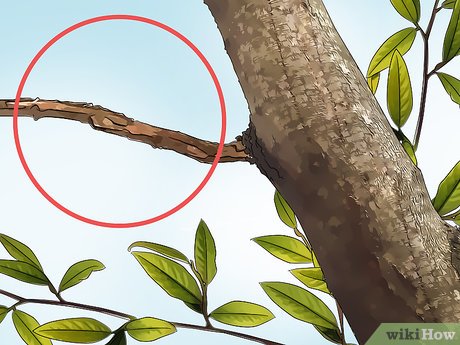Root rot is one of the most frustrating plant and tree problems homeowners and gardeners face. It creeps in silently, often starting below the soil line where you can’t see it, and by the time the symptoms show, the damage is already significant. Classic signs include wilting in moist soil, yellow or fading leaves, foul-smelling roots, and stunted growth.
Once these symptoms appear together, the plant is already in serious decline. For small potted plants, repotting or disposing of the soil may help. For larger trees, however, root rot can become a structural hazard, and safe removal is often the best choice. Recognizing the warning signs early is the key to protecting your garden or property.
1. Persistent Wilting in Moist Soil
A healthy plant wilts when it’s thirsty. A sick plant wilts even when water is present. This is one of the earliest and most confusing signs of root rot. Roots affected by fungi or bacteria can no longer move water into the plant effectively. To the casual observer, the soil looks fine, but the plant still droops.
Imagine watering your plant, waiting for recovery, and instead seeing it look worse a day later. If this pattern continues, it’s time to dig deeper—literally—and inspect the roots.
2. Yellowing or Discolored Foliage
Yellow leaves are a universal signal of stress, but with root rot, the cause isn’t always obvious. If leaves fade despite consistent light and water, the real problem is underground. Nutrients can’t travel upward when roots are clogged with rot.
Yellowing often starts at the bottom of the plant, working its way up. Some leaves may turn pale green before yellowing entirely, while others brown around the edges. If you can rule out pests and poor lighting, root health should be your next suspect.
3. Slowed or Halting Growth
A plant that refuses to grow new shoots, buds, or leaves during its active season is waving a red flag. Roots aren’t just about water—they also produce hormones that drive growth. When they fail, new development stops.
The University of Wisconsin Extension explains that when overwatering combines with poor drainage, roots suffocate. This suffocation weakens nutrient uptake, leading to stunted or distorted growth. If you see months of stagnation despite proper care, root rot may be stealing the energy your plant needs.
4. Slimy, Foul-Smelling Roots
The most definitive evidence comes from the roots themselves. Healthy roots are firm and either white or tan. Diseased ones turn black or brown, feel soft to the touch, and often release a musty or sour smell.
Gardeners sometimes describe the texture as “mushy spaghetti.” In advanced cases, the outer root layer peels off easily, leaving a string-like core behind. This symptom usually confirms root rot beyond doubt.
5. Soil That Never Dries Out
Overly wet soil is both a cause and a symptom of root rot. Poor drainage suffocates roots and creates a breeding ground for fungi. If your soil remains soggy long after watering—or puddles form around the base of trees—you’re inviting trouble.
Even in well-designed gardens, compacted soil can create the same effect. Trees planted in areas with heavy clay are particularly vulnerable, as water tends to pool rather than drain.
6. Fungus Gnats and Other Pests
While fungus gnats don’t cause root rot, their presence often points to a deeper issue. These small, black flies thrive in moist soil rich in decaying organic matter. If they suddenly appear, take it as a warning sign.
In houseplants, swarming gnats combined with yellowing leaves almost always means the soil has been too wet for too long. Outdoors, large infestations around garden beds or mulched trees suggest conditions favorable to fungal disease.
7. Leaf Drop and Branch Dieback
When roots fail, the entire plant or tree goes into survival mode. To conserve what little energy it has left, it may shed leaves prematurely or allow entire branches to die.
For trees, this can look like thinning crowns or patches of bare branches. It’s not unusual for homeowners to first notice something wrong when their tree suddenly loses leaves outside of fall. Unfortunately, by the time dieback is visible, root rot is often advanced.
8. Absence of New Growth
Perhaps the most concerning symptom is no new growth at all. Plants and trees have natural rhythms—when those cycles stop, something is seriously wrong. A root system damaged by rot cannot supply the nutrients or hormones needed to form new shoots.
If you’re in spring or early summer and your plant or tree shows no sign of growth while neighbors flourish, suspect rot.
Why Removal May Be Necessary
Once multiple symptoms align, the odds of recovery drop dramatically. For small plants, trimming away rotted roots and repotting in fresh soil may help. For trees or shrubs, the stakes are higher. A diseased root system can’t support the tree’s weight, creating a risk of falling.
That’s when professional help becomes essential. Services such as tree service austin can safely remove affected trees before they threaten nearby property or people.
Prevention Strategies
Preventing root rot is easier than reversing it. Here are key habits:
- Use well-draining soil in pots and gardens.
- Avoid overwatering. Check soil moisture before adding more.
- Ensure proper airflow around plants to reduce moisture buildup.
- Clean containers and tools before reusing them.
- Improve drainage outdoors with soil amendments or grading when water pools.
These practices make it harder for fungi to take hold in the first place.
Insights from Forestry Research
Root rot doesn’t only affect houseplants and shrubs—it devastates forests too. Oregon State University reports that laminated root rot and similar diseases can persist in forest soils for decades, spreading slowly from tree to tree and weakening entire stands.
For property owners, this highlights an important truth: once root pathogens establish in soil, they are incredibly difficult to eliminate. Early action and, when necessary, removal, prevent further losses.
Real-World Scenarios
- The houseplant enthusiast: A homeowner notices wilting despite watering. After inspection, the roots are mushy and black. Repotting works temporarily, but the fungus spreads to nearby pots. Disposal becomes the only way forward.
- The backyard gardener: A raised bed of tomatoes stagnates mid-season. Leaves yellow, soil stays damp, and gnats appear. The gardener learns that overwatering and heavy soil created the perfect conditions for rot. Next year, lighter soil and spacing prevent a repeat.
- The homeowner with an oak tree: Branches thin unexpectedly in late summer. A professional inspection reveals advanced root disease. Removal prevents the tree from toppling during storm season.
These stories underline why recognizing the signs early matters—not just for plants, but for safety and long-term landscape health.
Conclusion
Root rot is a hidden but destructive force. The eight signs—wilting in wet soil, yellowing leaves, slowed growth, mushy roots, soggy soil, fungus gnats, leaf or branch dieback, and absent new growth—are your best indicators.
Sometimes plants can be saved with quick intervention, but often, especially for larger trees, removal is the safest and most responsible step. With preventive practices and early detection, you can protect your garden, safeguard your property, and maintain a thriving landscape.





























